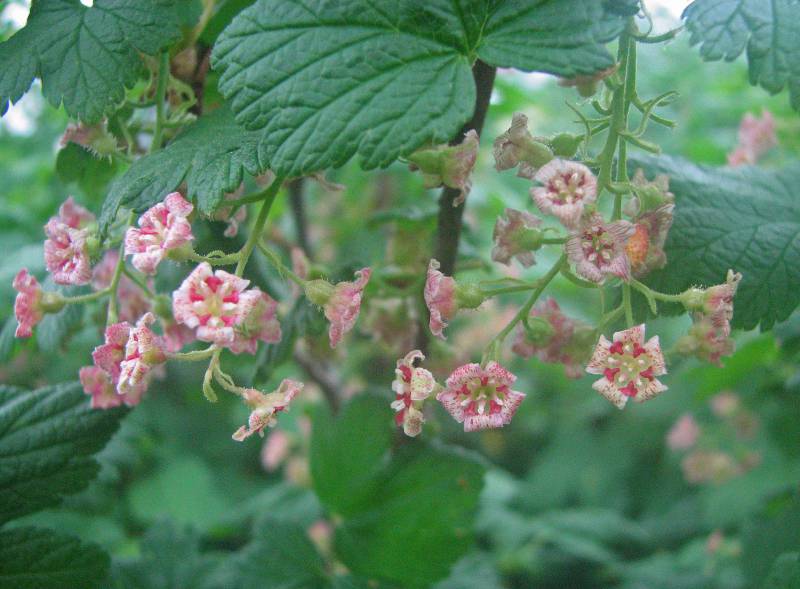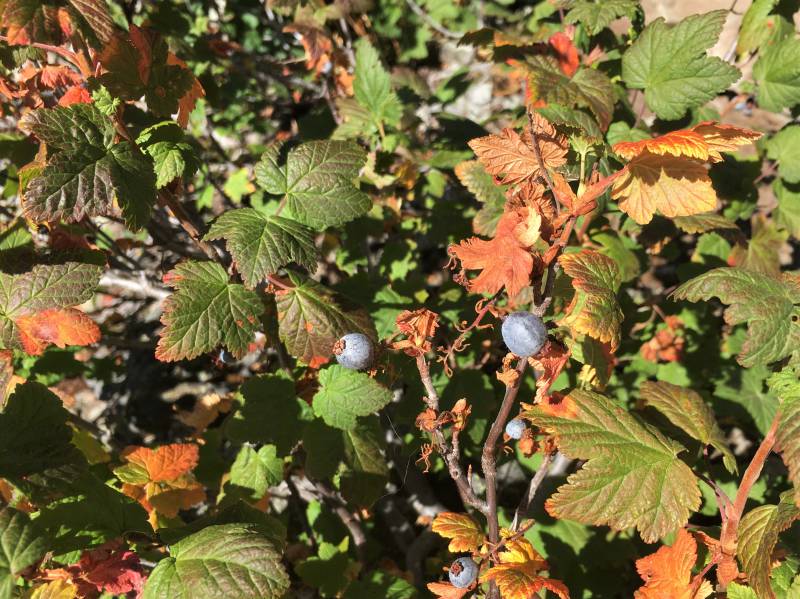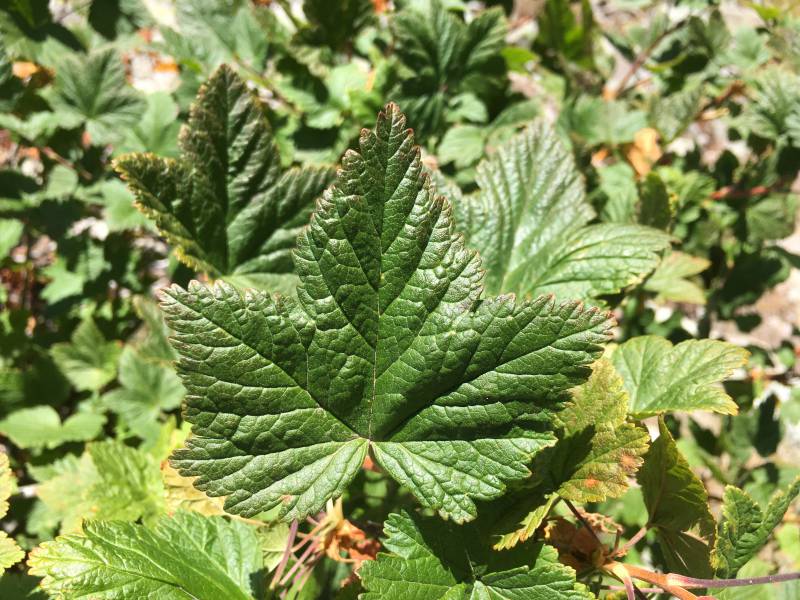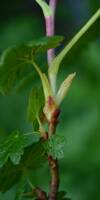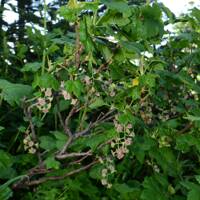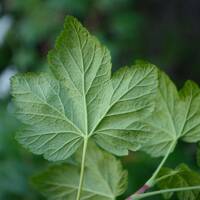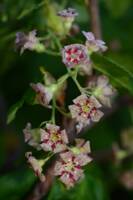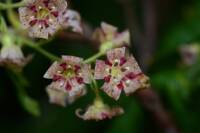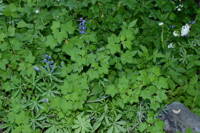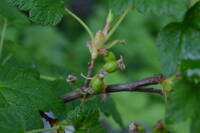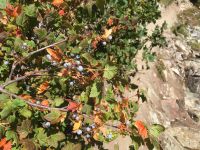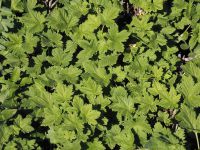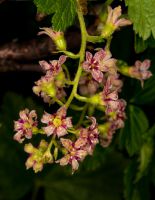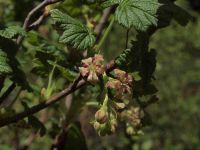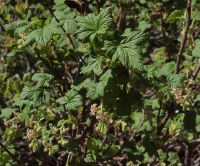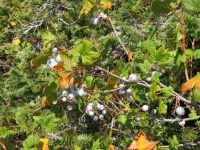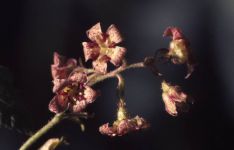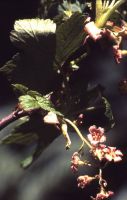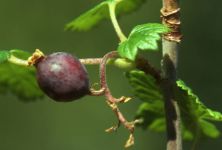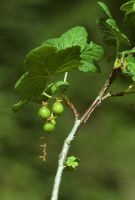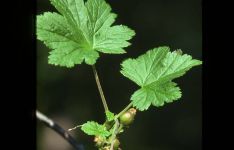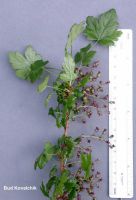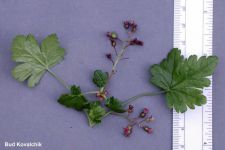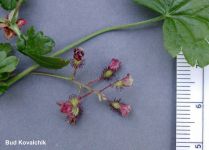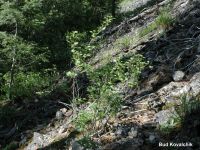Distribution: Occurring chiefly west of the Cascades crest in Washington; southern British Columbia to Oregon, east to Idaho.
Habitat: Stream banks, meadowland thickets, open ridges and rock slides, from middle elevations in the mountains to timberline.
Flowers: June-August
Origin: Native
Growth Duration: Perennial
Conservation Status: Not of concern
Pollination: Bumblebees, bees, hummingbirds
Spreading to erect shrub, the stems under 1 m. tall, the whole plant finely puberulent and covered with stalked glands.
Leaves alternate, petiolate, the blades palmately veined, deeply cordate, 3-8 cm. broad and somewhat shorter, lobed about half their length into 3 main and 2 smaller, ovate-deltoid, bi-serrate segments, the teeth rounded.
Inflorescence a pendant raceme, 7- to 15-flowered, shorter than the leaves; pedicels jointed under the ovary; calyx tube shallowly bowl shaped, 1.5 mm. long, lined internally with a thick disk, from the rim of which the 5 petals and 5 stamens arise, the whole forming a short tube in the center of the flower; the 5 calyx lobes broadly ovate-oblong, 3 mm. long and over half as broad, spreading, the tips recurved; petals red, 1-1.5 mm. long, obovate with a wedge-shaped base, inwardly pouched and spreading; filaments strongly flattened, glabrous; styles glabrous, united to the stigmas.
Berry glaucous-black, globular, up to 1 cm. long.
Publication: Erythea. 3: 34. 1895.
PNW Herbaria: Specimen records of Ribes acerifolium in the Consortium of Pacific Northwest Herbaria database
WA Flora Checklist: Ribes acerifolium checklist entry
OregonFlora: Ribes acerifolium information
E-Flora BC: Ribes acerifolium atlas page
CalPhotos: Ribes acerifolium photos

